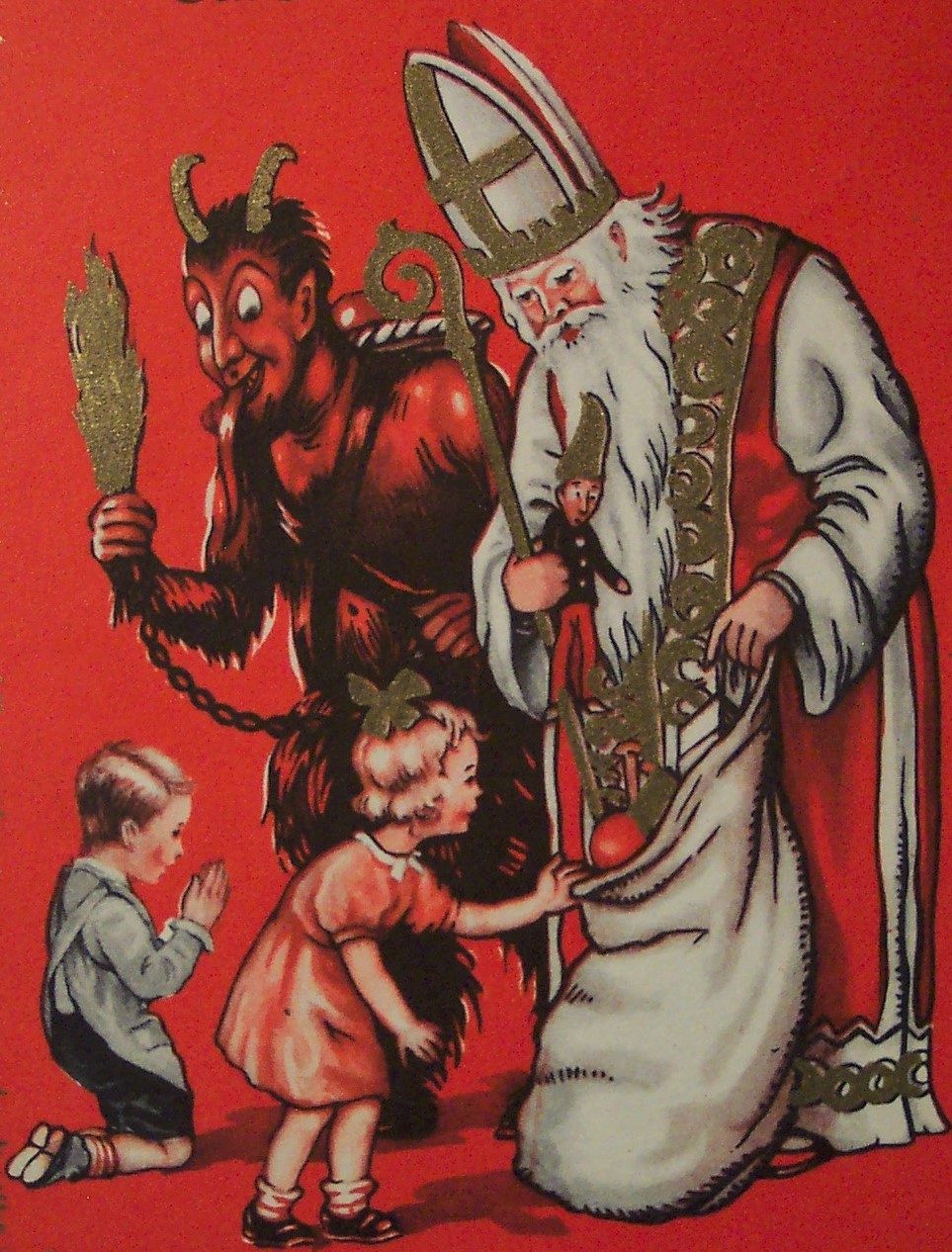Krampus: The Dark Side of Christmas

The Christmas Devil
by Charles Spratley
When you think of Christmas and the paranormal, you think Dickens. In his immortal classic, A Christmas Carol, the protagonist learns the joys of the Christmas spirit by the visiting of…well, Christmas Spirits. But we wanted to go deeper into the origins of the holiday. Everyone is familiar with Santa Claus or St. Nicholas. Whether you adhere to the belief in the 4th Century Christian bishop St. Nicholas or the Dutch version of St. Nick, the idea of a joyful gift-giver is firmly imbedded in our minds. What we visualize though as “jolly ol’ St. Nick” is strictly Germanic in origin. In fact, he has more in common with Odin (think Yuletide) than with an ancient Turkish cleric. And it’s from the same region that I have chosen to speak to you and put you in that Holiday mood. It is time to talk about Santa’s not-so- jolly companion, the Krampus.
Chances are, you have never heard about the Krampus, and if you had, it was in some obscure context. The Krampus is a seldom taught part of the Christmas holiday in the United States. In the Alpine region though, the story of the Krampus keeps children on their toes and makes sure they behave. This devil travels with Santa on his yearly journey and punishes the wicked just as easily at Santa gives his gifts. Some stories tell of the Krampus merely whipping bad children while other myths have the devil putting the children in a sack and taking them away to be devoured at a later time. The history of the Krampus itself goes back to pre-Christian traditions. Usually portrayed as almost a satyr, he is portrayed as a goatish man with horns and an unusually long tongue. He is also seen sometimes wearing chains, as a symbol of being chained by the Christian Church. The other item that is usually seen being held by the Krampus is a ruten, which is a bundle of twigs used by the Krampus to beat unruly children. In some cultures today, parents paint these ruten gold and hang them about the house, to remind their children of their fate if they misbehave.
This devil even has own holiday. As December 6th is the Feast of Saint Nicholas in many countries, December 5th is Krampusnacht, or Krampus Night. This evening is a celebrated by rowdy revelers, dressed like the hairy devil and usually fueled by alcohol (which to my understanding is a requirement) and run amok through the streets. They scare adults and children alike as they make their way through the thoroughfare. The actual running event is called the Krampusluft, or Krampus Run.
Just like All Hallows Eve and Easter, holidays that are usually considered Christian in nature have a heavy pagan precursor or influence. Even though the Krampus is not normally associated with Christmas here in the States, sightings here are on the rise as people pay their respects to Santa’s carpool companion. Go to your local antique shop and ask if they have any Krampus cards from the Victorian time period, they are quite collectible and very nice conversational pieces when placed on the mantle with the stockings.
- Posted in:
- The Paranormal Library
